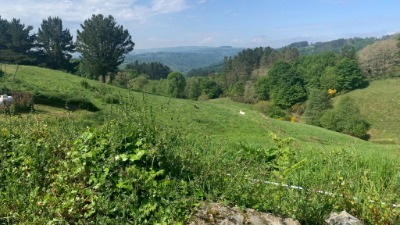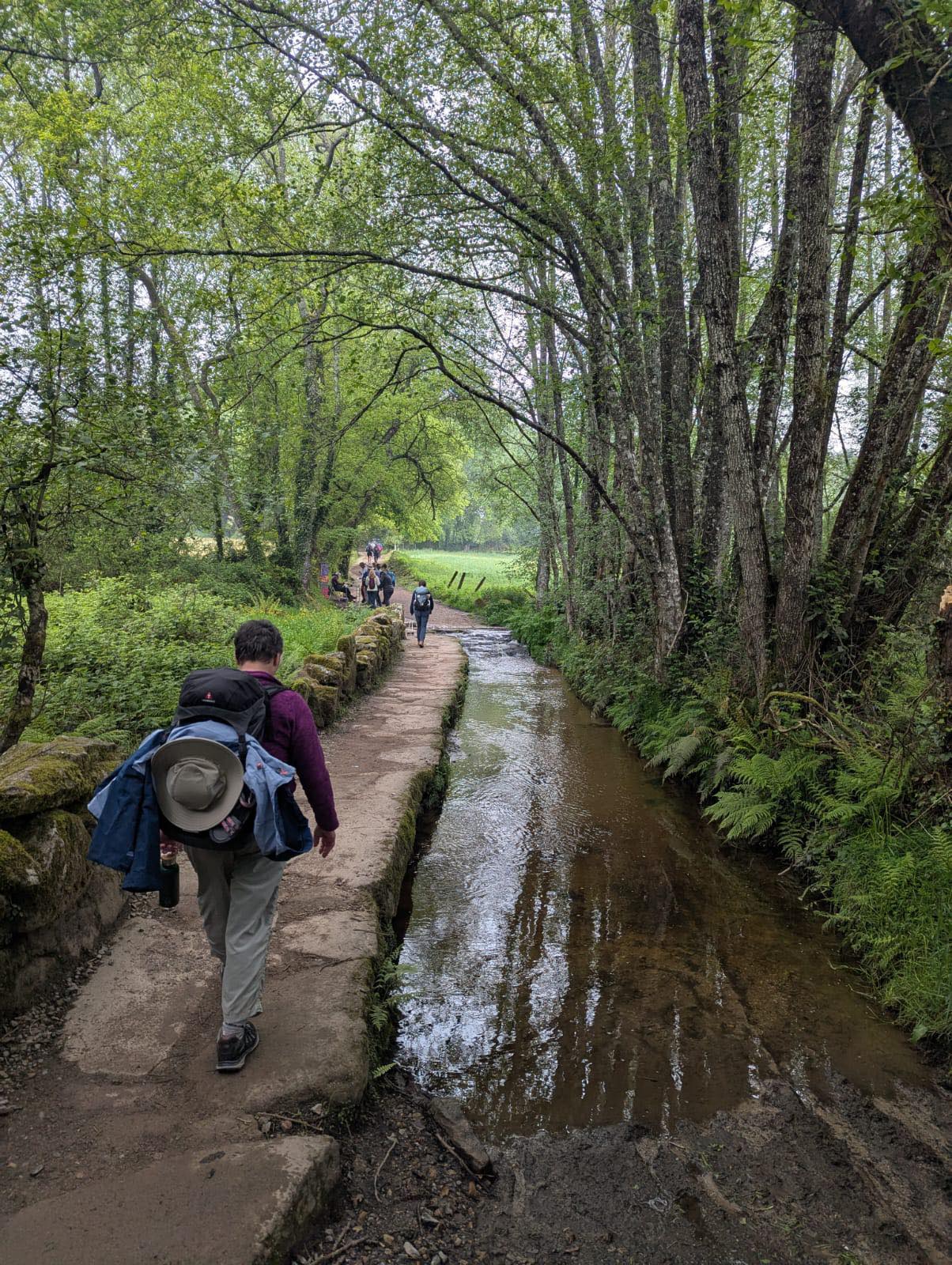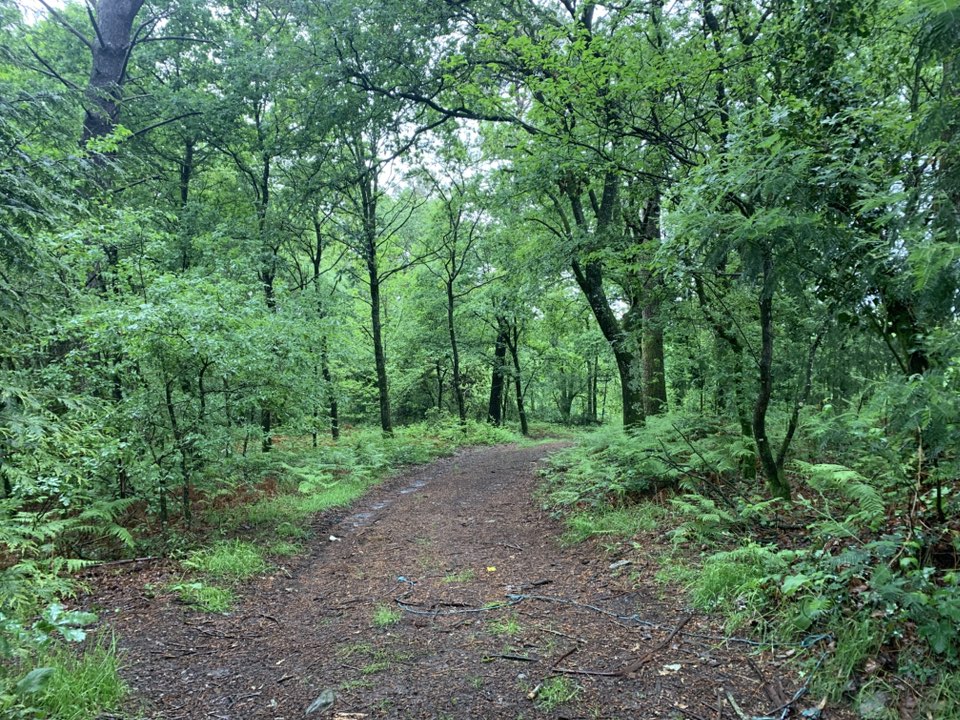Pilgrimage (Part 1)
Walking The Camino de Santiago

My son and I recently completed what was for him a lifetime’s ambition to walk the last one hundred miles of the Camino de Santiago. For those who are not familiar, this is an almost five-hundred-mile ancient routeway that wends its way across northern Spain from the French Pyrenees to the cathedral city of Santiago de Compostela in Galicia. There are also multiple additional ancient tracks from almost every country in Europe that weave their way to the same destination. The Camino has been, and still is, a significant historic path.
Having completed almost a dozen of the many long-distance national trails in the British Isles - one of which, St Cuthbert’s Way, is also described as a pilgrimage route; and another, The Ridgeway, which is reputed to be the oldest track in Britain - I would say that not only am I a seasoned walker, but like my son, I have always had a latent interest in the Camino. So, it was both a privilege and a blessing to be invited to walk and share this once-in-a-lifetime’s experience with him.
My only doubt came in considering the whole issue of a pilgrimage – not least when it involved visiting a well-known Catholic shrine - so I was comforted when praying just before I set off on the journey, when the Lord gave me the following scripture:
“Blessed are those whose strength is in You, whose hearts are set on pilgrimage…” (Psalm 84:5).
There is also a connection with, and an awareness of, following in the footsteps of those who have trod the path before.
This assured me that there would be something from God for me on the journey - and this proved to be the case.
What is Pilgrimage?
The term ‘pilgrimage’ describes a journey of some sort. This can be an actual physical trip or walk to a destination, or an allegorical one such as John Bunyan wrote about in Pilgrim’s Progress; where the physical effort required to reach the goal is interpreted as a metaphor for the human spiritual journey. This is something present in most religious philosophies. There is also a connection with, and an awareness of, following in the footsteps of those who have trod the path before.
The History of Pilgrimage
Pilgrimage is something almost as old as civilisation itself and there is evidence of prehistoric pilgrimage sites in Mesopotamia, Egypt and Greece.

Within the British Isles, Stonehenge, Avebury and Callanish are just three popular examples of places to which people made their way over very long geographical distances to engage in some form of worship.
For those of us with our roots in the Judeo/Christian faith, we trace the history of pilgrimage back to Deuteronomy 16, where the Lord instructs His people concerning the annual celebration of the feasts of Passover, Pentecost and Tabernacles:
“Three times a year all your men must appear before the Lord your God at the place he will choose: at the Festival of Unleavened Bread, the Festival of Weeks and the Festival of Tabernacles. No one should appear before the Lord empty-handed” (verse 16)
This instruction is repeated in Exodus 23:17 and 34:23.
Once the Temple was built, this annual pilgrimage took on the form of going up to meet with God in Jerusalem. The Psalms of Ascent (120-134) were traditionally sung on these occasions, as pilgrims made the long steep climb from the desert plains up to the 2,575 feet elevation of the city. We are told in Luke 2 that Jesus’ parents conformed with this tradition:
“Every year Jesus’ parents went to Jerusalem for the Festival of the Passover” (verse 41).
The three Abrahamic faiths all have important sites that receive hundreds of thousands of pilgrims each year....
During His life, Jesus performed many miraculous signs and wonders and in a remarkably short period of time following His death and resurrection, places associated with these events – such as Cana (where He turned water into wine), or Tabgtha (where it is believed the feeding of the five thousand took place) became destinations for pilgrimage, imitating the established Jewish custom.
The same occurred in regard to places associated with the apostles, as, in an age steeped in superstition, their tombs and those of well-known martyrs, along with the sale of indulgences, pieces of the ‘true’ cross and the exaggerated veneration of the apostles’ relics, enabled the growth (with accompanying significant wealth) of important centres of pilgrimage in the Middle Ages.
The three Abrahamic faiths all have important sites that receive hundreds of thousands of pilgrims each year: Jerusalem, Rome, Santiago de Compostela, Mecca and Medina are perhaps the best known.
Santiago is the Spanish way of saying ‘St James’. The town was established as a settlement and became a centre for pilgrimage after the apparent ‘discovery’ of the bones of James the apostle – son of Zebedee and brother of John the Evangelist – in the 9th century. The legend is that following the death of Jesus, James travelled to Spain to preach the gospel. We read in Acts 12 how he was beheaded on the instructions of Herod Agrippa.
“It was about this time that King Herod arrested some who belonged to the church, intending to persecute them. He had James, the brother of John, put to death with the sword” (verses 1-2).
... it marked the beginning of James’ veneration and pilgrimage to his tomb.
James was the first of the apostles to be martyred. After this, legend says that because he had previously preached in Spain, his body was taken by boat to a place near Finisterre in Galicia, where it remained hidden until it was discovered by Teodomiro, the Bishop of Iria, in the 820s. There is almost no historical evidence to authenticate this, but it marked the beginning of

James’ veneration and pilgrimage to his tomb. Gradually, over the course of more than one thousand years, the original church and its services to the many pilgrims that arrive daily, has been expanded and set into a fixed daily routine.
Today, with an average of 2,000 pilgrims arriving each day, there are three daily pilgrim masses, the central feature of which is the enormous swinging censer which sends out plumes of fragrant incense over the assembled pilgrims. It is quite breath-taking to watch and sit beneath. This ritual had its origin in a very practical need: to mask the smell of the many unwashed pilgrims who had walked the five hundred miles on the Camino, with very few opportunities to cleanse their bodies (or their souls).
A modern phenomenon
Over the past few years the BBC has made seven different series featuring ‘celebrities’ walking various ancient pilgrimage routes. Two of these have featured routes in the British Isles (to Iona and Bardsey), one was to Rome, and another to Istanbul. But three of them featured various of the different Caminos to Santiago (the French, Portuguese and Alpine routes). There is no doubt that these popular series will have been an influence on some of those walking - myself included. But clearly, there is something very significant at work: pilgrimage is a growing modern phenomenon. To walk a Camino is now itself a tourist attraction.
To qualify as an official ‘pilgrim’ and receive the official Compostela certificate from the Pilgrim’s Office in Santiago, one must walk at least 100 km and prove this by producing a Camino ‘passport’, which must be stamped at least twice a day at various locations along the route. In 2024, just under half a million pilgrims (499,242 people) received their Compostela.
Estimates suggest the true annual total of pilgrims walking to Santiago could exceed 1.5 million.
However, the true number of pilgrims is likely to be far higher, as some do not request the certificate (especially if they walk several of the different

Caminos to the same destination); some complete it in stages over a number of years and some begin but never reach Santiago – a few even die on the way. Estimates suggest the true annual total of pilgrims walking to Santiago could exceed 1.5 million. During the seven days we walked the routeway in May 2025, we were just two of 20,567 pilgrims to receive a Compostela that week.
Pilgrims literally come to the Camino from across the world: the largest number (42%) come, unsurprisingly, from Catholic Spain. Other countries with significant numbers are the U.S.A., Italy, Germany, Portugal and the U.K. We personally met pilgrims from Central and South America, Australia and a smattering of Eastern European countries. But, intriguingly, by far the largest number of people we encountered were from Korea. Enquiring how they had even heard about the Camino, almost all pointed to social media, especially YouTube, Instagram and TikTok.
In Part 2, I will look at the many and varied reasons people have for setting off on this unusual and extraordinary journey, as well as give my own reflections on what it meant to me.
Sarah Winbow, 03/07/2025